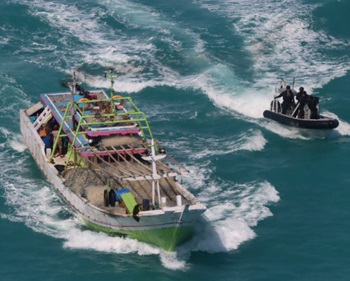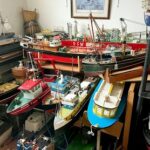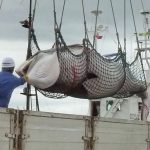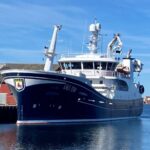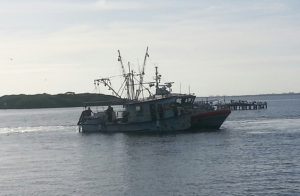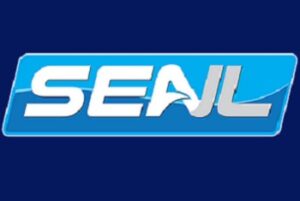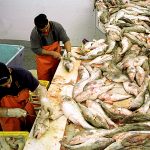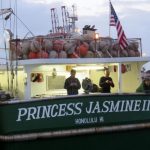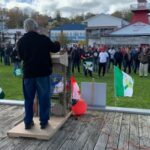Category Archives: International
Reagan Paul: Hope Floats, But Not for UMaine’s VolturnUS Floating Offshore Wind Platform
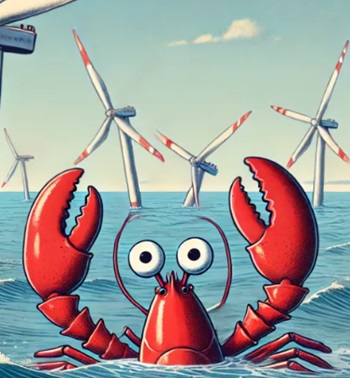 Last year, LD 1895 “An Act Regarding the Procurement of Energy from Offshore Wind Resources” passed, which got the ball rolling on Maine’s push for offshore wind port. The port will be the culmination of a more than decade-long taxpayer-funded effort to develop a floating offshore wind research array project, with the goal of eventually turning the Gulf of Maine into an industrialized wind farm. The viability of this technology was to be tested through an array of 12 wind turbines using the patented VolturnUS concrete, semi-submersible floating offshore wind turbine platform design created by Dr. Habib Dagher of the University of Maine, over the last decade. The Portland Press Herald conceded that this floating offshore wind research array project is too cost-prohibitive without an almost billion-dollar dedicated wind port facility off the coast of Maine, which means that a port must be constructed before the state can even move forward with the research array outlined in LD 1895. Enter Sears Island. more, >>CLICK TO READ<< 07:46
Last year, LD 1895 “An Act Regarding the Procurement of Energy from Offshore Wind Resources” passed, which got the ball rolling on Maine’s push for offshore wind port. The port will be the culmination of a more than decade-long taxpayer-funded effort to develop a floating offshore wind research array project, with the goal of eventually turning the Gulf of Maine into an industrialized wind farm. The viability of this technology was to be tested through an array of 12 wind turbines using the patented VolturnUS concrete, semi-submersible floating offshore wind turbine platform design created by Dr. Habib Dagher of the University of Maine, over the last decade. The Portland Press Herald conceded that this floating offshore wind research array project is too cost-prohibitive without an almost billion-dollar dedicated wind port facility off the coast of Maine, which means that a port must be constructed before the state can even move forward with the research array outlined in LD 1895. Enter Sears Island. more, >>CLICK TO READ<< 07:46

End of cod moratorium touted after 32 years as Ottawa approves small increase in commercial catch
Thirty-two years after the federal government announced a moratorium that shut down Newfoundland and Labrador’s cod industry, Fisheries Minister Diane Lebouthillier said Wednesday that it is reopening. But what the federal government described in a statement as the “historic return of the commercial northern cod fishery” will amount to just a small increase in fishing activity that had been allowed during the recent years of the moratorium. “Ending the northern cod moratorium is a historic milestone for Newfoundlanders and Labradorians,” Lebouthillier said in a statement. “We will cautiously but optimistically build back this fishery with the prime beneficiaries being coastal and Indigenous communities throughout Newfoundland and Labrador.” The Fisheries and Oceans announcement comes with political overtones. Video, more, >>CLICK TO READ<< 09:40
A fishing conglomerate created a fake company to facilitate a merger. It could now be on the hook for billions of dollars.
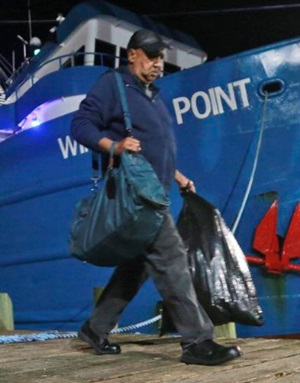 Commercial fishers are one of the professions that’s been nickeled-and-dimed in recent decades, right up there with long-haul truckers and chicken farmers. In New Bedford, Massachusetts, the most lucrative port for seafood catches in the country, a fisherman profiled by ProPublica in 2022 was forced to contract with one of the world’s seafood powerhouses, Blue Harvest, because it had become the only buyer in the local market. Per the contract, fishers have to lease fishing permits from the company; the costs for vessel maintenance, fuel, gear, and repairs on company-owned boats are taken out from fishers’ own paychecks, called settlement sheets. After fishing around the clock for ten days to meet quotas, Jerry Leeman only made 14 cents on the pound and his crew 7 cents, even as their haddock catch sold for $2.28 per pound at market. Blue Harvest took the lion’s share of earnings, while placing all the risks of the trade onto fishers. “Tell me how I can catch 50,000 pounds of fish yet I don’t know what my kids are going to have for dinner,” more, >>CLICK TO READ<< 07:59
Commercial fishers are one of the professions that’s been nickeled-and-dimed in recent decades, right up there with long-haul truckers and chicken farmers. In New Bedford, Massachusetts, the most lucrative port for seafood catches in the country, a fisherman profiled by ProPublica in 2022 was forced to contract with one of the world’s seafood powerhouses, Blue Harvest, because it had become the only buyer in the local market. Per the contract, fishers have to lease fishing permits from the company; the costs for vessel maintenance, fuel, gear, and repairs on company-owned boats are taken out from fishers’ own paychecks, called settlement sheets. After fishing around the clock for ten days to meet quotas, Jerry Leeman only made 14 cents on the pound and his crew 7 cents, even as their haddock catch sold for $2.28 per pound at market. Blue Harvest took the lion’s share of earnings, while placing all the risks of the trade onto fishers. “Tell me how I can catch 50,000 pounds of fish yet I don’t know what my kids are going to have for dinner,” more, >>CLICK TO READ<< 07:59
Jake Anderson’s Struggles With the Saga on ‘Deadliest Catch,’ Explained
 For 19 years, Deadliest Catch viewers have gotten a firsthand glimpse into some of the deadliest ocean waves surrounding the U.S. Crabbers and fishermen are the stars of this series, a few of whom have been there since day one of the show. Captain Sig Hansen has been the primary captain featured in this series, and he has mentored several others who have since become captains of their own boats. One of those captains and former mentees is Jake Anderson, who is presently dealing with big issues. In 2015 with his lifesavings, he invested in the Saga as his new boat with another co-owner. Unfortunately, thanks to some financial problems his partner allegedly caused, Jake Anderson lost the Saga. Photos, more, >>CLICK TO READ<< 16:17
For 19 years, Deadliest Catch viewers have gotten a firsthand glimpse into some of the deadliest ocean waves surrounding the U.S. Crabbers and fishermen are the stars of this series, a few of whom have been there since day one of the show. Captain Sig Hansen has been the primary captain featured in this series, and he has mentored several others who have since become captains of their own boats. One of those captains and former mentees is Jake Anderson, who is presently dealing with big issues. In 2015 with his lifesavings, he invested in the Saga as his new boat with another co-owner. Unfortunately, thanks to some financial problems his partner allegedly caused, Jake Anderson lost the Saga. Photos, more, >>CLICK TO READ<< 16:17
New Chair and Vice-Chair of Scottish Pelagic Fishermen’s Association
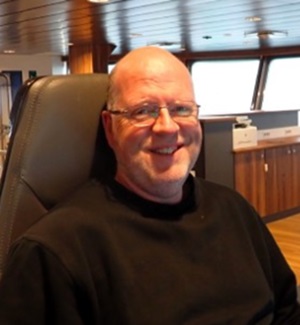 Alex Wiseman has retired as chair of the Scottish Pelagic Fishermen’s Association (SPFA) after 15 years of dedicated service, with former vice-chair Richard Williamson elected as the new chair and Alexander (Ally) West becoming the new vice-chair. Tributes were paid to Alex Wiseman at a recent board meeting of the SPFA, who has led the Association with real commitment for a considerable period, ensuring that the voice of Scottish pelagic catching sector was heard at all levels of government. The new chair, Richard Williamson, who is the co-skipper of the Shetland vessel, Research, said: “Alex has been a superb chair and everyone in the Association would like to thank him for excellent work in looking after the interests of our sector for so many years. more, >>CLICK TO READ<< 08:37
Alex Wiseman has retired as chair of the Scottish Pelagic Fishermen’s Association (SPFA) after 15 years of dedicated service, with former vice-chair Richard Williamson elected as the new chair and Alexander (Ally) West becoming the new vice-chair. Tributes were paid to Alex Wiseman at a recent board meeting of the SPFA, who has led the Association with real commitment for a considerable period, ensuring that the voice of Scottish pelagic catching sector was heard at all levels of government. The new chair, Richard Williamson, who is the co-skipper of the Shetland vessel, Research, said: “Alex has been a superb chair and everyone in the Association would like to thank him for excellent work in looking after the interests of our sector for so many years. more, >>CLICK TO READ<< 08:37
How Brixham fishermen rescued 70 after U-boat attack
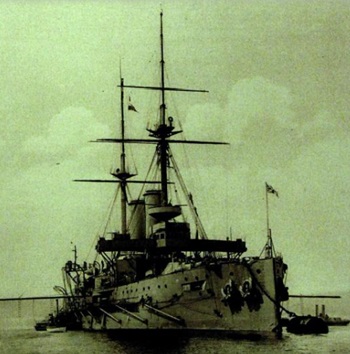 This feature is dedicated to William Pillar – Captain of a fishing smack out of Brixham who, with three crew and two boys, saved seventy Naval personnel from a watery grave in the First World War after their Battleship sank. It was on New Year’s Day 1915 at 2am that the battleship HMS Formidable was patrolling in Start Bay on the Devon coast when a German U-boat spotted her and, having fired two torpedoes, ensured the Formidable then sank. With the watertight doors closed, most of the crew luckily assembled on deck while scrambling for the lifeboats. There had been 790 sailors aboard the Battleship but only 201 would survive and of these 71 would be rescued by Provident, a fishing smack out of Brixham under the command of Pillar and a small crew. The lucky sailors had been adrift for 12 hours when the “smack”, returning to Brixham, spotted their small Navy cutter. Captain Pillar knew of the dangers he now faced, yet on his fourth attempt he successfully had a line aboard the cutter despite huge seas and the dangers to all men. more, >>CLICK TO READ<< 10:27
This feature is dedicated to William Pillar – Captain of a fishing smack out of Brixham who, with three crew and two boys, saved seventy Naval personnel from a watery grave in the First World War after their Battleship sank. It was on New Year’s Day 1915 at 2am that the battleship HMS Formidable was patrolling in Start Bay on the Devon coast when a German U-boat spotted her and, having fired two torpedoes, ensured the Formidable then sank. With the watertight doors closed, most of the crew luckily assembled on deck while scrambling for the lifeboats. There had been 790 sailors aboard the Battleship but only 201 would survive and of these 71 would be rescued by Provident, a fishing smack out of Brixham under the command of Pillar and a small crew. The lucky sailors had been adrift for 12 hours when the “smack”, returning to Brixham, spotted their small Navy cutter. Captain Pillar knew of the dangers he now faced, yet on his fourth attempt he successfully had a line aboard the cutter despite huge seas and the dangers to all men. more, >>CLICK TO READ<< 10:27
Scottish Government Discusses Cetacean Deaths from Fishing Line Entanglements
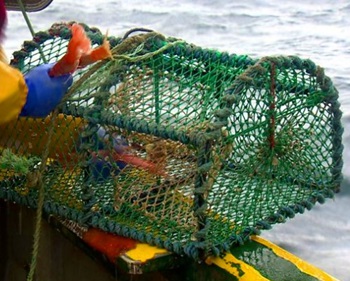 The Scottish Government has engaged in discussions with the Scottish Association for Marine Science (SAMS) regarding their research into reducing cetacean deaths caused by fishing line entanglements. This issue was highlighted during a parliamentary session, where Kenneth Gibson (SNP) inquired about the government’s actions on the matter. Cabinet Secretary for Rural Affairs, Land Reform, and Islands, Mairi Gougeon, acknowledged the importance of the research and the government’s commitment to addressing the issue. She emphasized the government’s intention to work with stakeholders to minimize bycatch and entanglement of sensitive marine species through the future catching policy. This effort aligns with Scotland’s broader goal of ensuring sustainable fisheries. more, >>CLICK TO READ<< 08:56
The Scottish Government has engaged in discussions with the Scottish Association for Marine Science (SAMS) regarding their research into reducing cetacean deaths caused by fishing line entanglements. This issue was highlighted during a parliamentary session, where Kenneth Gibson (SNP) inquired about the government’s actions on the matter. Cabinet Secretary for Rural Affairs, Land Reform, and Islands, Mairi Gougeon, acknowledged the importance of the research and the government’s commitment to addressing the issue. She emphasized the government’s intention to work with stakeholders to minimize bycatch and entanglement of sensitive marine species through the future catching policy. This effort aligns with Scotland’s broader goal of ensuring sustainable fisheries. more, >>CLICK TO READ<< 08:56
Mass mortality: A fish scientist follows a tip about die-offs at B.C. salmon farms
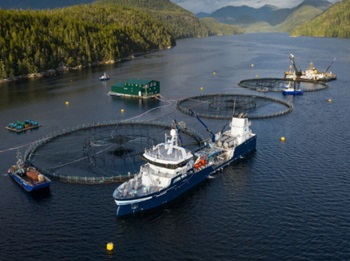 A tipster had told Proboszcz, a fisheries biologist at Watershed Watch Salmon Society, that salmon farms off the coast had been experiencing mysterious and massive die-offs and nobody was saying anything about it. “Yeah, it was a little crazy,” said Proboszcz of his decision to make the long trip. “But he didn’t know why they were dying.” Before Proboszcz left, a colleague had tracked a number of boats that were allegedly bringing fish all the way around the south end of Vancouver Island and into the Nanaimo area. But the boats had nearly finished shuttling all the fish, according to the anonymous source. Desperate, Proboszcz had tried to hire a skiff and even a helicopter to see what was going on. But nothing worked out, and so he decided to take matters into his own hands. Photos, more, >>CLICK TO READ<< 14:25
A tipster had told Proboszcz, a fisheries biologist at Watershed Watch Salmon Society, that salmon farms off the coast had been experiencing mysterious and massive die-offs and nobody was saying anything about it. “Yeah, it was a little crazy,” said Proboszcz of his decision to make the long trip. “But he didn’t know why they were dying.” Before Proboszcz left, a colleague had tracked a number of boats that were allegedly bringing fish all the way around the south end of Vancouver Island and into the Nanaimo area. But the boats had nearly finished shuttling all the fish, according to the anonymous source. Desperate, Proboszcz had tried to hire a skiff and even a helicopter to see what was going on. But nothing worked out, and so he decided to take matters into his own hands. Photos, more, >>CLICK TO READ<< 14:25
Market conditions continue to pressure seafood processors and fishermen
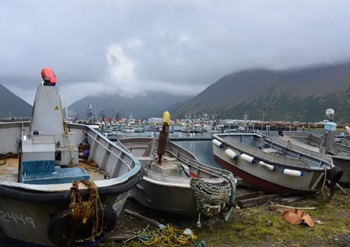 Consumers think of seafood as a premium purchase, which is not a good image when household budgets are tight and shoppers are worried about inflation. “The problem is not the fish,” said Jeremy Woodrow, executive director of the Alaska Seafood Marketing Institue. “The challenge is in the global marketplace.” Woodrow in February called the 2023 market for Alaska salmon “rock bottom” with low prices and weak demand, though maybe the industry was coming off that rocky bottom, he said then. Still, the pain is not gone. “A lot of buyers are barely holding on,” Woodrow said. “Our processors lost a lot of money the past year or two.” more, >>CLICK TO READ<< 09:40
Consumers think of seafood as a premium purchase, which is not a good image when household budgets are tight and shoppers are worried about inflation. “The problem is not the fish,” said Jeremy Woodrow, executive director of the Alaska Seafood Marketing Institue. “The challenge is in the global marketplace.” Woodrow in February called the 2023 market for Alaska salmon “rock bottom” with low prices and weak demand, though maybe the industry was coming off that rocky bottom, he said then. Still, the pain is not gone. “A lot of buyers are barely holding on,” Woodrow said. “Our processors lost a lot of money the past year or two.” more, >>CLICK TO READ<< 09:40

Family who lost loved ones on Spanish fishing vessel help unveil new N.L. monument
A new monument honouring 21 lives lost on a Spanish fishing boat that sank off the coast of Newfoundland in 2022 was unveiled in St. John’s on Friday by a Spanish delegation that included family of the deceased. The 50-metre-long fishing boat, called the Villa de Pitanxo, operated out of northwest Spain’s Galicia province. It sank at around 2:30 a.m. NT on Feb. 15, 2022. The crew was made up of 16 Spaniards, five Peruvians and at least three Ghanaians, and is the largest fishing disaster in Galicia in the last 50 years. Nine bodies were recovered from the water and repatriated to Spain, but the remaining 12 were never found. “The memorial is very important for the families. and all people from the sea. Fishermen, our families of the sea,” said María José de Pazo Friday. She lost her father, Francisco. Video, more, >>CLICK TO READ<< 18:36
Governor urged to use ‘Oregon way’ in ocean wind energy development
 Oregon’s state seafood commodity commissions have expressed their concerns in a letter to Kotek over federal offshore wind energy development plans proposed for the southern Oregon coast. The letter emphasizes what the commission states are adverse effects on the ocean environment and Oregon’s sustainable seafood industry. Oregon Trawl, Oregon Dungeness Crab, Oregon Albacore and Oregon Salmon Commissions urged Kotek to prioritize Oregon’s own planning process under the auspices of the state official “Roadmap” initiative, intended to guide responsible offshore wind energy development in Oregon. The Oregon groups opposing the development said the offshore wind facilities will be built in the pristine ocean ecosystems that support remarkable marine biodiversity, including many protected species. No environmental studies have been performed to assess the risks of large-scale offshore wind energy production which risks overwhelming this unique remote ocean region, according to the opponents. more, >>CLICK TO READ<< 09:32
Oregon’s state seafood commodity commissions have expressed their concerns in a letter to Kotek over federal offshore wind energy development plans proposed for the southern Oregon coast. The letter emphasizes what the commission states are adverse effects on the ocean environment and Oregon’s sustainable seafood industry. Oregon Trawl, Oregon Dungeness Crab, Oregon Albacore and Oregon Salmon Commissions urged Kotek to prioritize Oregon’s own planning process under the auspices of the state official “Roadmap” initiative, intended to guide responsible offshore wind energy development in Oregon. The Oregon groups opposing the development said the offshore wind facilities will be built in the pristine ocean ecosystems that support remarkable marine biodiversity, including many protected species. No environmental studies have been performed to assess the risks of large-scale offshore wind energy production which risks overwhelming this unique remote ocean region, according to the opponents. more, >>CLICK TO READ<< 09:32
Littleproud predicts rough seas ahead for Illawarra wind zone under Coalition government
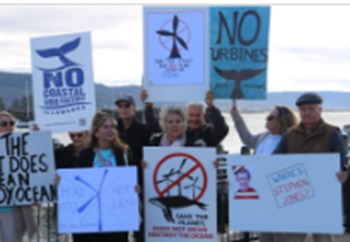 A future Coalition government would not allow a wind energy zone to be developed off the Illawarra coast, Nationals Leader David Littleproud said in Wollongong on Monday (17 June). To the cheers of a group of anti-wind zone protesters at Belmore Basin, Mr Littleproud said the Coalition would stop wind farms from going ahead. “There will be no wind zone, there is a better way to do this. Make no mistake, we’re going to live up to our international commitments, but we’re not going to tear away your economy, your environment and tear up the social cohesion of this great community,” he said. Mr Littleproud and NSW Nationals Senator Ross Cadell visited the region following the weekend declaration by Federal Climate Change and Energy Minister Chris Bowen of a 1022 square km wind zone area, 20 km off the coast. more, >>CLICK TO READ<< 11:53
A future Coalition government would not allow a wind energy zone to be developed off the Illawarra coast, Nationals Leader David Littleproud said in Wollongong on Monday (17 June). To the cheers of a group of anti-wind zone protesters at Belmore Basin, Mr Littleproud said the Coalition would stop wind farms from going ahead. “There will be no wind zone, there is a better way to do this. Make no mistake, we’re going to live up to our international commitments, but we’re not going to tear away your economy, your environment and tear up the social cohesion of this great community,” he said. Mr Littleproud and NSW Nationals Senator Ross Cadell visited the region following the weekend declaration by Federal Climate Change and Energy Minister Chris Bowen of a 1022 square km wind zone area, 20 km off the coast. more, >>CLICK TO READ<< 11:53
Floating Wind Madness in Maine
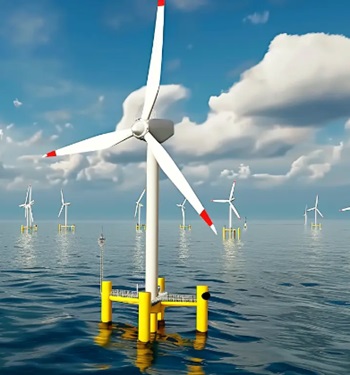 The Government of Maine has really big plans for floating wind, a floating net zero fantasy, in fact. Since floating wind power is the next big green thing, it is worth taking a close look at this ruinous vision. Floating wind is a fad, not an established technology. It has yet to be built at utility scale or tested in a hurricane. The world’s biggest grid-connected system is a tiny 50 MW and just came online off Scotland. The cost of floating wind is necessarily much greater than fixed wind. A fixed wind tower sits on a simple monopile, while a floating tower sits on a huge complex structure called a floater. We are talking about massive 500-foot towers with 500-ton turbines on top and 300-foot blades catching the wind. more, >>CLICK TO READ<< 06:17
The Government of Maine has really big plans for floating wind, a floating net zero fantasy, in fact. Since floating wind power is the next big green thing, it is worth taking a close look at this ruinous vision. Floating wind is a fad, not an established technology. It has yet to be built at utility scale or tested in a hurricane. The world’s biggest grid-connected system is a tiny 50 MW and just came online off Scotland. The cost of floating wind is necessarily much greater than fixed wind. A fixed wind tower sits on a simple monopile, while a floating tower sits on a huge complex structure called a floater. We are talking about massive 500-foot towers with 500-ton turbines on top and 300-foot blades catching the wind. more, >>CLICK TO READ<< 06:17
Nigel Farage vows to kick EU fishermen out of UK waters in Reform bombshell
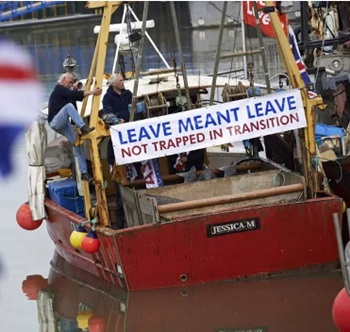 Nigel Farage has vowed to kick EU fishermen out of British waters in a move which will come as a major boost to many who campaigned to take back control of British waters after Brexit. The Reform UK leader outlined his vision in his party’s manifesto, Our Contract with You, launched today in Merthyr Tydfil in south Wales. The document pledges to – among other things – stop EU fleets taking British quotas; expand the Royal Navy overseas squadron; and ban massive supertrawlers such as the Dutch-flagged Margeris from plundering UK waters. The document proclaims the the UK government has “betrayed the industry”. more, >>CLICK TO READ<< 08:53
Nigel Farage has vowed to kick EU fishermen out of British waters in a move which will come as a major boost to many who campaigned to take back control of British waters after Brexit. The Reform UK leader outlined his vision in his party’s manifesto, Our Contract with You, launched today in Merthyr Tydfil in south Wales. The document pledges to – among other things – stop EU fleets taking British quotas; expand the Royal Navy overseas squadron; and ban massive supertrawlers such as the Dutch-flagged Margeris from plundering UK waters. The document proclaims the the UK government has “betrayed the industry”. more, >>CLICK TO READ<< 08:53
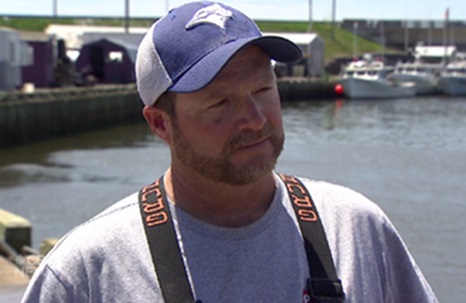
P.E.I. lobster fishers frustrated by low prices, say they’re the same as 18 years ago
There are just a few weeks left in the spring lobster season on Prince Edward Island, and while catches in many areas have been good, Island fishers are again frustrated by the prices they are being paid on the wharf. At North Lake, P.E.I., Jamie Bruce said fishers are getting $6.50 a pound up to $7, and market prices are the same. Bruce said that’s the same price lobsters were fetching 18 years ago. “I went back in my records, and I keep a record every year. Actually, I had a guy called me today. He said he thinks in 1997 we even saw these prices,” Bruce said. “So I went back as far as 2006 and we were very similar to what we are then, with the major difference. Everything else is either doubled or tripled in price. Bait. Fuel. Video, more, >>CLICK TO READ<< 06:15
Offshore wind farm: Business owner fumes over controversial $10billion project on NSW south coast
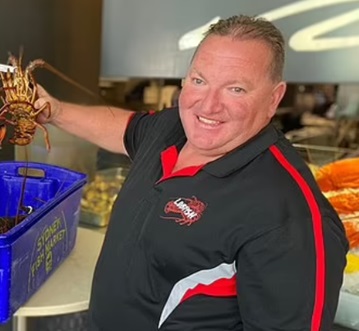 A commercial fisherman fears his livelihood is under threat after last-minute amendments to a new offshore wind farm were given the green light. The final amendments to the 100-hectare plot of sea where the $10billion project will be built were completed by the federal government on Saturday. The project was initially planned to be just 10km off the coast, where local fisherman Mark Horne caught lobsters for a living, but was changed at the last minute. Fearing that his fishing spot would disappear, Mr Horne invested $500,000 in a new boat to expand into new fishing areas, which is now obsolete following the amendments. photos, charts, more, >>CLICK TO READ<< 14:32
A commercial fisherman fears his livelihood is under threat after last-minute amendments to a new offshore wind farm were given the green light. The final amendments to the 100-hectare plot of sea where the $10billion project will be built were completed by the federal government on Saturday. The project was initially planned to be just 10km off the coast, where local fisherman Mark Horne caught lobsters for a living, but was changed at the last minute. Fearing that his fishing spot would disappear, Mr Horne invested $500,000 in a new boat to expand into new fishing areas, which is now obsolete following the amendments. photos, charts, more, >>CLICK TO READ<< 14:32
Norway: Protection zone’s unexpected consequences hit local fishermen
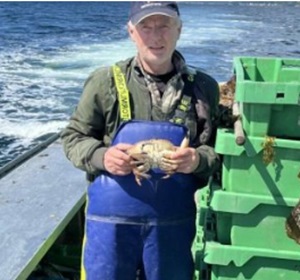 Norway’s Directorate of Fisheries is being urged to issue a dispensation allowing commercial fishermen to fish for wrasse and crab inside a newly created conservation area for lobster near Stavanger. The Norwegian Fishermen’s Association (Norges Fiscella) believes that such a dispensation can be made without any negative effects on conservation. These measures were introduced to protect over-exploited lobster stocks, but this has had unforeseen consequences for local fishermen, as Norges Fiskarkag and local association Sør-Norges-Fiskarlag have taken the initiative in drawing attention to this issue. more, >>CLICK TO READ<< 11:54
Norway’s Directorate of Fisheries is being urged to issue a dispensation allowing commercial fishermen to fish for wrasse and crab inside a newly created conservation area for lobster near Stavanger. The Norwegian Fishermen’s Association (Norges Fiscella) believes that such a dispensation can be made without any negative effects on conservation. These measures were introduced to protect over-exploited lobster stocks, but this has had unforeseen consequences for local fishermen, as Norges Fiskarkag and local association Sør-Norges-Fiskarlag have taken the initiative in drawing attention to this issue. more, >>CLICK TO READ<< 11:54
Inside the Slimy, Smelly, Secretive World of Glass-Eel Fishing
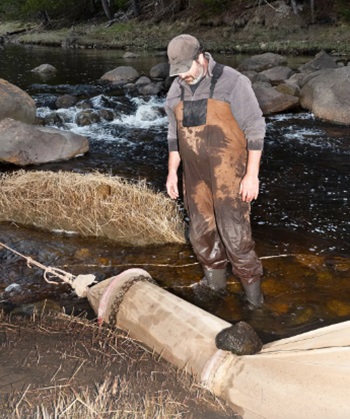 The Sargasso Sea, a warm, calm expanse of the North Atlantic Ocean, is bordered not by land but by four strong currents—a gyre. Vast mats of prickly brown seaweed float so thickly on the windless surface that Christopher Columbus worried about his ships getting stuck. The biodiverse sanctuary within and beneath the sargassum produces Anguilla rostrata, the American eel. Each female lays some eight million eggs. The eggs hatch as ribbonlike larvae that drift to the Gulf Stream, which carries them to the continental shelf. By the time they reach Maine, the larvae have transformed into swimmers about the length of an index finger, with the circumference of a bean sprout and the translucence of a jellyfish. Hence their nickname, glass eels, also known as elvers. The glass eel is barely visible, but for a dark stripe—its developing backbone—and a couple of chia seeds for eyes. “Ghosts on the water,” a Maine fisherman once called them. Travelling almost as one, like a swarm or a murmuration, glass eels enter tidal rivers and push upstream, pursuing the scent of freshwater until, ideally, they reach a pond and commence a long, tranquil life of bottom-feeding. more, >>CLICK TO READ<< 10:50
The Sargasso Sea, a warm, calm expanse of the North Atlantic Ocean, is bordered not by land but by four strong currents—a gyre. Vast mats of prickly brown seaweed float so thickly on the windless surface that Christopher Columbus worried about his ships getting stuck. The biodiverse sanctuary within and beneath the sargassum produces Anguilla rostrata, the American eel. Each female lays some eight million eggs. The eggs hatch as ribbonlike larvae that drift to the Gulf Stream, which carries them to the continental shelf. By the time they reach Maine, the larvae have transformed into swimmers about the length of an index finger, with the circumference of a bean sprout and the translucence of a jellyfish. Hence their nickname, glass eels, also known as elvers. The glass eel is barely visible, but for a dark stripe—its developing backbone—and a couple of chia seeds for eyes. “Ghosts on the water,” a Maine fisherman once called them. Travelling almost as one, like a swarm or a murmuration, glass eels enter tidal rivers and push upstream, pursuing the scent of freshwater until, ideally, they reach a pond and commence a long, tranquil life of bottom-feeding. more, >>CLICK TO READ<< 10:50
Cornwall Community funds new boat for 12-year-old fisherman
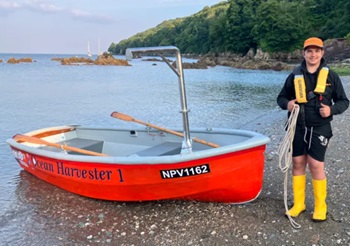 A boy who lost his fishing boat to a storm has bought a new one with the help of his community in Cornwall. Antony, 12, is a known entrepreneur in Cawsand who sells his catch of fish, crabs and lobsters on the beach. At the beginning of 2023, his boat was washed away during a storm – returning to the shore shattered. “He was really distressed that it was gone; really upset, really angry that it was broken and that was it,” his mum Michal said. The new boat was christened and named the Ocean Harvester 1. more, >>CLICK TO READ<< 07:22
A boy who lost his fishing boat to a storm has bought a new one with the help of his community in Cornwall. Antony, 12, is a known entrepreneur in Cawsand who sells his catch of fish, crabs and lobsters on the beach. At the beginning of 2023, his boat was washed away during a storm – returning to the shore shattered. “He was really distressed that it was gone; really upset, really angry that it was broken and that was it,” his mum Michal said. The new boat was christened and named the Ocean Harvester 1. more, >>CLICK TO READ<< 07:22
Frank Lasee: Wind Turbines and Lobsters Mean Less Lobsters and Not Enough Electricity
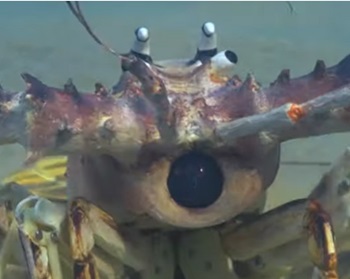 National Lobster Day is a good time to think about what the expensive, subsidized offshore wind development is going to do to lobsters and the $400 million lobster industry. Offshore wind will disrupt fishing for them and harm their habitat. This is not good for the Maine lobsters, and it is not good for electric affordability either. The 30 gigawatts (GW) of offshore wind ordered by President Joe Biden–not Congress–is catering to the far left of the Democrat Party’s base. Over 2,000 wind turbines and foundations, 6,800 miles of cable and hundreds of specialist vessels are needed to deploy 30 GW, according to the Department of Energy. The offshore wind industry spent $2.7 billion in supply chain, transmission, ports and boats in the first year of operation. Their costs have only begun. Electricity rates are going up wherever they add offshore wind electricity generation. more, >>CLICK TO READ<< 10:30
National Lobster Day is a good time to think about what the expensive, subsidized offshore wind development is going to do to lobsters and the $400 million lobster industry. Offshore wind will disrupt fishing for them and harm their habitat. This is not good for the Maine lobsters, and it is not good for electric affordability either. The 30 gigawatts (GW) of offshore wind ordered by President Joe Biden–not Congress–is catering to the far left of the Democrat Party’s base. Over 2,000 wind turbines and foundations, 6,800 miles of cable and hundreds of specialist vessels are needed to deploy 30 GW, according to the Department of Energy. The offshore wind industry spent $2.7 billion in supply chain, transmission, ports and boats in the first year of operation. Their costs have only begun. Electricity rates are going up wherever they add offshore wind electricity generation. more, >>CLICK TO READ<< 10:30
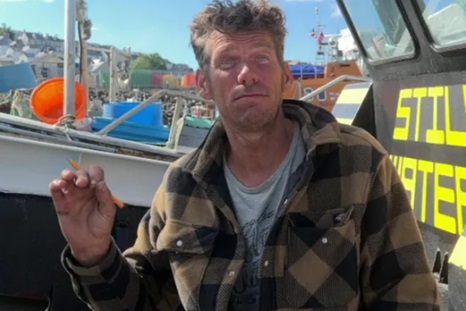
Why do fishermen feel disillusioned after Brexit?
“I don’t think it matters who I vote for, they’re all lying,” said fisherman Dave Toy. He said it was not what he voted for and as a result he did not see any point in voting in the general election. Fishermen said they had wanted Brexit to deliver an increase in fish stock, but instead had got more paperwork. They cited the introduction of a mandatory catch app to record catches before they are landed, new vehicle monitoring systems, inspections and the requirement of medical certificates, which was later removed for existing fishermen. The government said the measures had improved both safety and fish stock management. Fisherman Graham Nicholas said life post-Brexit had been difficult. Photos, more, >>CLICK TO READ<< 06:41
Electric lobster boats: Bringing future resiliency to energy infrastructure
 It’s called The Sea Cucumber. A prototype diesel electric hybrid fishing boat made by Glas Ocean Electric in Nova Scotia. If you plug it in, it’ll charge overnight. It has 98 kilowatt hours, so you could drive to your fishing ground on diesel, operate for six to eight hours on electric power, then head home on diesel. “You can take your eight hour day now and replace six or seven of those hours with cheap electric power instead of diesel power,” The boat, which could produce fuel savings from 50 to 70 percent, was on display as part of a Nova Scotia government announcement of a new Fisheries and Aquaculture Energy Efficiency Innovation Fund for the province. Video, photos, more, >>CLICK TO READ<< 08:25
It’s called The Sea Cucumber. A prototype diesel electric hybrid fishing boat made by Glas Ocean Electric in Nova Scotia. If you plug it in, it’ll charge overnight. It has 98 kilowatt hours, so you could drive to your fishing ground on diesel, operate for six to eight hours on electric power, then head home on diesel. “You can take your eight hour day now and replace six or seven of those hours with cheap electric power instead of diesel power,” The boat, which could produce fuel savings from 50 to 70 percent, was on display as part of a Nova Scotia government announcement of a new Fisheries and Aquaculture Energy Efficiency Innovation Fund for the province. Video, photos, more, >>CLICK TO READ<< 08:25
Biden’s Policies Threaten Small Lobster Fishers and Right Whales
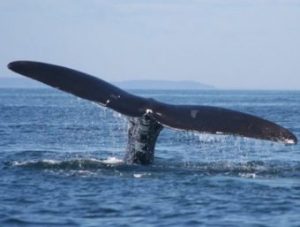 While lobstermen likely haven’t been contributing to NARW deaths, it is undisputed that vessel strikes, both in U.S. and foreign waters, have. Which brings us to the Biden administration’s decision to construct thousands of offshore wind turbines smack-dab in the middle of the whale’s migration route and habitat. Biden’s East Coast offshore wind initiative could qualify as an extinction level event for the North Atlantic right whale. Despite this, the Biden administration plans to build 30,000 megawatts of traditional offshore wind facilities (with structures attached to the ocean floor) in federal waters by 2030, and an additional 15,000 megawatts of floating industrial offshore wind power by 2035. more, >>CLICK TO READ<< 06:31
While lobstermen likely haven’t been contributing to NARW deaths, it is undisputed that vessel strikes, both in U.S. and foreign waters, have. Which brings us to the Biden administration’s decision to construct thousands of offshore wind turbines smack-dab in the middle of the whale’s migration route and habitat. Biden’s East Coast offshore wind initiative could qualify as an extinction level event for the North Atlantic right whale. Despite this, the Biden administration plans to build 30,000 megawatts of traditional offshore wind facilities (with structures attached to the ocean floor) in federal waters by 2030, and an additional 15,000 megawatts of floating industrial offshore wind power by 2035. more, >>CLICK TO READ<< 06:31
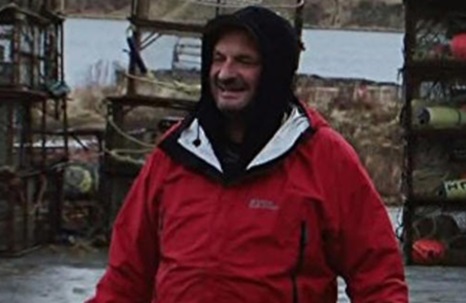
‘Deadliest Catch’ Fisherman Nick Mavar Has Passed Away – The Former Northwestern Deckhand Was 59
Nick Mavar, who appeared on Discovery Channel’s reality franchise Deadliest Catch, died Thursday in Naknek, AK, Bristol Bay Police Chief Jeffrey Eldie confirmed to Deadline. He was 59. Mavar suffered a medical emergency at a boatyard in Naknek Thursday afternoon, according to Eldie. Paramedics were called and he was taken to a local hospital where he was pronounced dead of what was determined to be natural causes, Eldie says. He was a familiar face to fans, given his status on the Northwestern, which is captained by the franchise’s de-facto elder statesman, Sig Hansen. Mavar was also uncle to onetime Northwestern greenhorn turned-deckhand turned-Saga captain, Jake Anderson. more, >>CLICK TO READ<< 18:10
Flex Doors Provide Flexibility
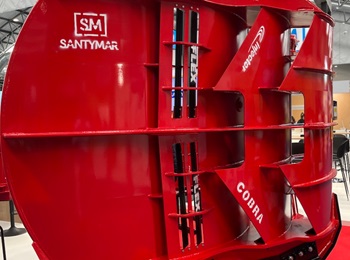 Mørenot’s distinctive red Injector doors can be seen in practically every Icelandic port as its Sparrow and Cobra designs are becoming increasingly popular. Cobra doors have two sets of louvres, while the Sparrows have three. ‘If you’re fishing with twin-rig gear and need to go down to one trawl, then the doors are going to be too large, so the crew can reduce the surface area by opening louvres in the doors. Or if a trawler works more than one set of gear for different fishing grounds or target species, then the doors can be adjusted to match the trawl, so this would be ideal for the Spanish fleet that operates over so many areas,’ said Mørenot Ísland’s Björn Jóhannsson. Photos, more, >>CLICK TO READ<< 10:50
Mørenot’s distinctive red Injector doors can be seen in practically every Icelandic port as its Sparrow and Cobra designs are becoming increasingly popular. Cobra doors have two sets of louvres, while the Sparrows have three. ‘If you’re fishing with twin-rig gear and need to go down to one trawl, then the doors are going to be too large, so the crew can reduce the surface area by opening louvres in the doors. Or if a trawler works more than one set of gear for different fishing grounds or target species, then the doors can be adjusted to match the trawl, so this would be ideal for the Spanish fleet that operates over so many areas,’ said Mørenot Ísland’s Björn Jóhannsson. Photos, more, >>CLICK TO READ<< 10:50
RWE to start seabed surveys at floating wind site offshore California
 Site investigation survey work will soon start at RWE’s floating wind project site off the coast of Northern California, where the Germany-based offshore wind developer plans to build its first commercial-scale floating offshore wind farm, Canopy. RWE will be performing initial site investigation surveys during 2024 and 2025, with the first activities beginning in June 2024. The work will involve mapping the seafloor so the best locations for the wind turbines, anchors and electric cables can be assessed. The surveys will also provide data that will help better understand biodiversity, habitats, and other environmental factors to ensure responsible planning and design that minimizes the impact on ocean ecosystems, according to the developer. more, >>CLICK TO READ<< 08:11
Site investigation survey work will soon start at RWE’s floating wind project site off the coast of Northern California, where the Germany-based offshore wind developer plans to build its first commercial-scale floating offshore wind farm, Canopy. RWE will be performing initial site investigation surveys during 2024 and 2025, with the first activities beginning in June 2024. The work will involve mapping the seafloor so the best locations for the wind turbines, anchors and electric cables can be assessed. The surveys will also provide data that will help better understand biodiversity, habitats, and other environmental factors to ensure responsible planning and design that minimizes the impact on ocean ecosystems, according to the developer. more, >>CLICK TO READ<< 08:11
Explorer Ernest Shackleton’s last ship found off Labrador’s south coast, says expedition
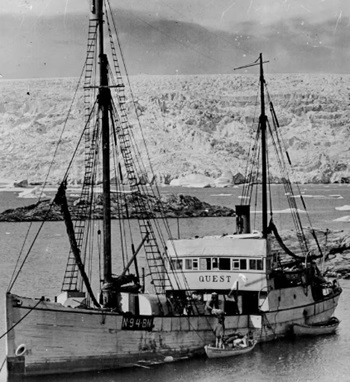 The last vessel helmed by famed Anglo-Irish explorer Sir Ernest Shackleton, lost for more than 60 years, has been discovered on the ocean floor, less than half a kilometre off Labrador’s south coast, says the Royal Canadian Geographical Society. Expedition leader John Geiger, the society’s CEO, said the wreck was found in the Labrador Sea, lying at a depth of 390 metres. He added it was in the vicinity of where the ship had been reported to have sunk. ”This is a very important vessel. Historically it was the final expedition ship of Sir Ernest Shackleton,” he said Wednesday morning at a news conference at the Marine Institute in St. John’s. “As many of you know, he died on this ship on his final expedition of the Shackleton–Rowett expedition, which set out to initially explore Canada.” Using sonar operated by Marine Institute staff, the international team say they found the Quest off the coast near Battle Harbour, on Sunday, five days into its expedition, which left June 5. more, >>CLICK TO READ<< 12:24
The last vessel helmed by famed Anglo-Irish explorer Sir Ernest Shackleton, lost for more than 60 years, has been discovered on the ocean floor, less than half a kilometre off Labrador’s south coast, says the Royal Canadian Geographical Society. Expedition leader John Geiger, the society’s CEO, said the wreck was found in the Labrador Sea, lying at a depth of 390 metres. He added it was in the vicinity of where the ship had been reported to have sunk. ”This is a very important vessel. Historically it was the final expedition ship of Sir Ernest Shackleton,” he said Wednesday morning at a news conference at the Marine Institute in St. John’s. “As many of you know, he died on this ship on his final expedition of the Shackleton–Rowett expedition, which set out to initially explore Canada.” Using sonar operated by Marine Institute staff, the international team say they found the Quest off the coast near Battle Harbour, on Sunday, five days into its expedition, which left June 5. more, >>CLICK TO READ<< 12:24
F/V Frøyanes: Ice-Capable Trawler/Crabber for Norwegian Barents Sea Fishing Company
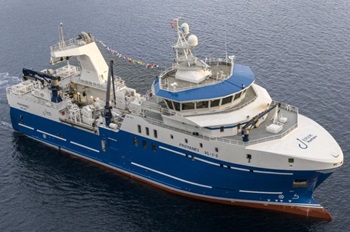 Norwegian fishing company Ervik Havfiske recently took delivery of a new shrimp trawler built to a design by naval architecture firm Marin Teknikk. The steel-hulled F/V Frøyanes is outfitted as a triple-rig trawler that can also be utilised for catching snow crab in the Norwegian and Barents Seas. “Ervik Havfiske wanted a combination of shrimp trawling and crab catching capability,” Thomas Edvard Gjerde, Sales Manager Fish and Aqua at Marin Teknikk, told Baird Maritime. “The owner also wanted a vessel with a moonpool, which is a common feature on the longliners in its fleet.” The array of fishing equipment on Frøyanes includes conventional trawls and a large moonpool through which crab pots can be hauled on board. Moonpools that have proven effective in longliners are also confirmed to be useful in working with crabs, particularly in ensuring their gentle handling and protection from the elements for better catch quality. This also allows female crabs to be easily sorted out and released back into the sea so they can reproduce. Photos, more, >>CLICK TO READ<< 10:24
Norwegian fishing company Ervik Havfiske recently took delivery of a new shrimp trawler built to a design by naval architecture firm Marin Teknikk. The steel-hulled F/V Frøyanes is outfitted as a triple-rig trawler that can also be utilised for catching snow crab in the Norwegian and Barents Seas. “Ervik Havfiske wanted a combination of shrimp trawling and crab catching capability,” Thomas Edvard Gjerde, Sales Manager Fish and Aqua at Marin Teknikk, told Baird Maritime. “The owner also wanted a vessel with a moonpool, which is a common feature on the longliners in its fleet.” The array of fishing equipment on Frøyanes includes conventional trawls and a large moonpool through which crab pots can be hauled on board. Moonpools that have proven effective in longliners are also confirmed to be useful in working with crabs, particularly in ensuring their gentle handling and protection from the elements for better catch quality. This also allows female crabs to be easily sorted out and released back into the sea so they can reproduce. Photos, more, >>CLICK TO READ<< 10:24
Scots overwhelmingly supportive of fishing sector – Polling shows UK-produced food as important as UK-produced energy
 A large majority of Scots are backing the fishing industry amid growing pressure on fishing grounds, in a reminder to politicians not to neglect an important sector ahead of the general election. A new poll commissioned by the Scottish Fishermen’s Federation (SFF) reveals that 19 in 20 (95.7%) of Scots believe it is important for the UK to retain control over its fisheries. The poll also highlights that 91% agree fishing is a vital part of the UK economy. Additionally, 89.7% of people agree that UK-produced food is just as important as UK-produced energy. These issues will be debated by an election hustings panel including Kate Forbes, Rhoda Grant, Rachael Hamilton and Alastair Carmichael in Edinburgh tomorrow (12 June) at an event hosted by SFF. Please find attached the release and images for use. Please let me know if you have any further questions. Thanks.
A large majority of Scots are backing the fishing industry amid growing pressure on fishing grounds, in a reminder to politicians not to neglect an important sector ahead of the general election. A new poll commissioned by the Scottish Fishermen’s Federation (SFF) reveals that 19 in 20 (95.7%) of Scots believe it is important for the UK to retain control over its fisheries. The poll also highlights that 91% agree fishing is a vital part of the UK economy. Additionally, 89.7% of people agree that UK-produced food is just as important as UK-produced energy. These issues will be debated by an election hustings panel including Kate Forbes, Rhoda Grant, Rachael Hamilton and Alastair Carmichael in Edinburgh tomorrow (12 June) at an event hosted by SFF. Please find attached the release and images for use. Please let me know if you have any further questions. Thanks.





